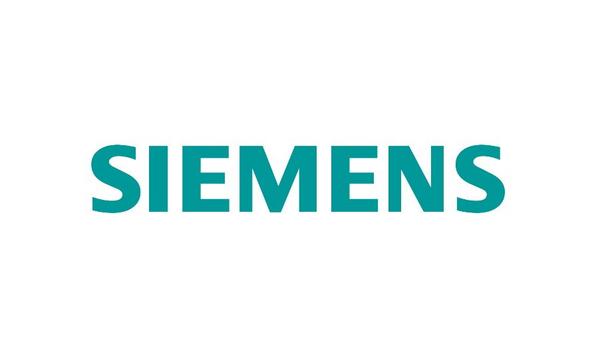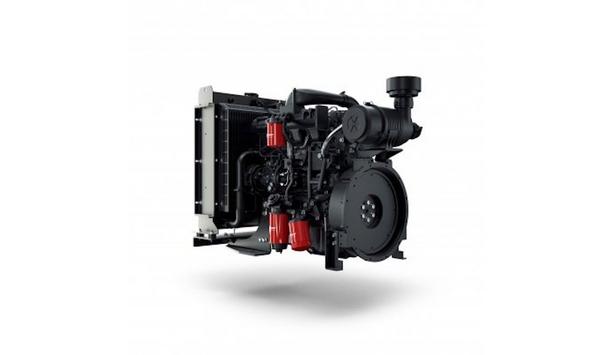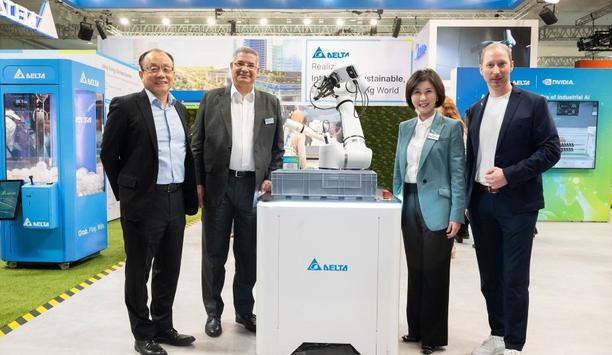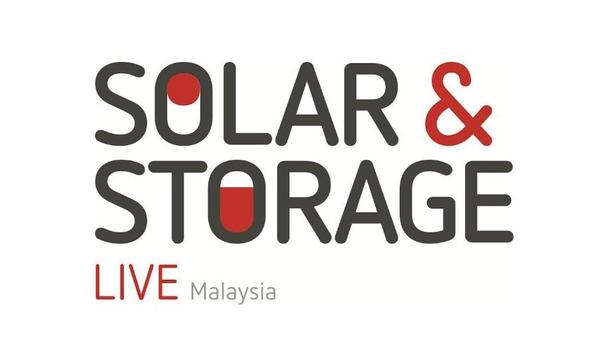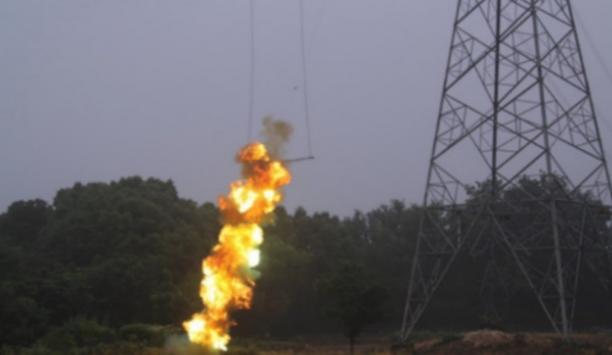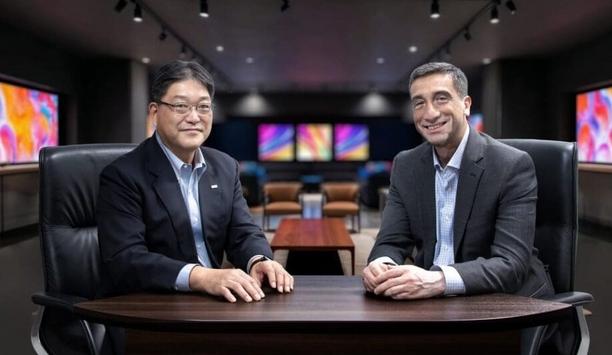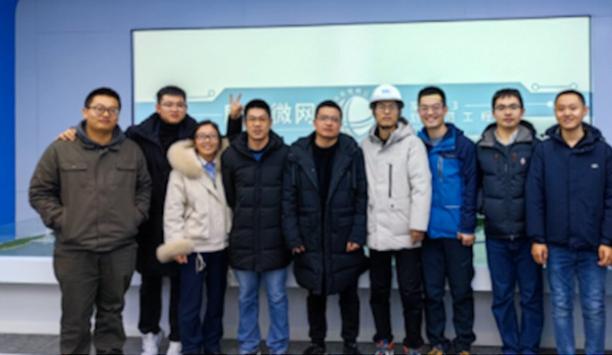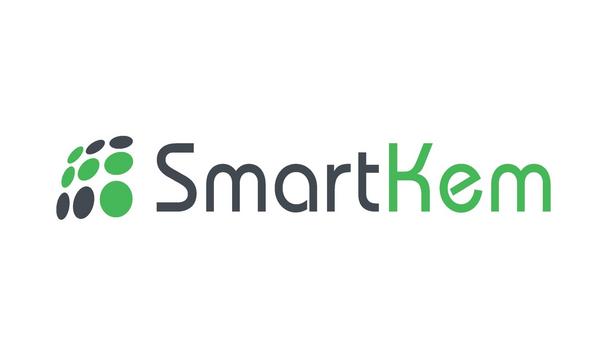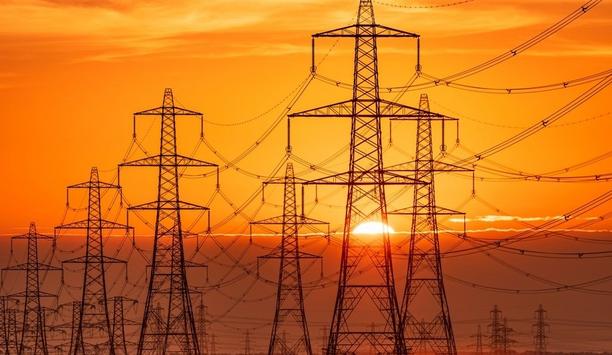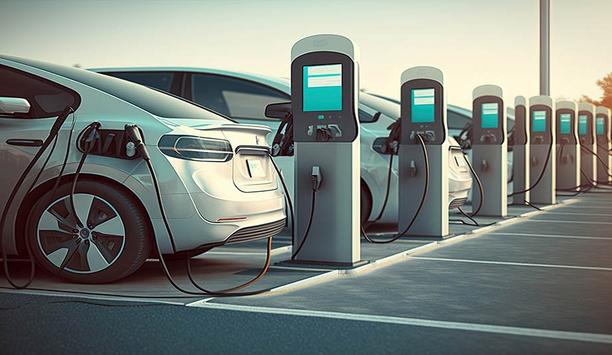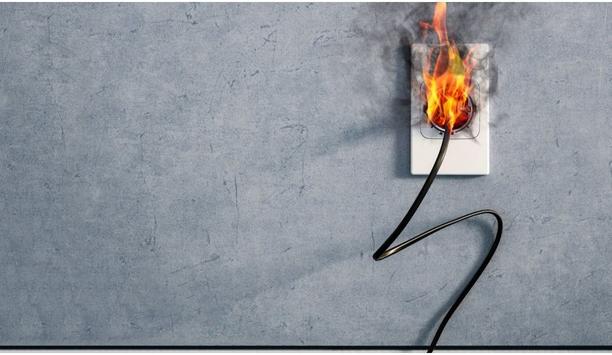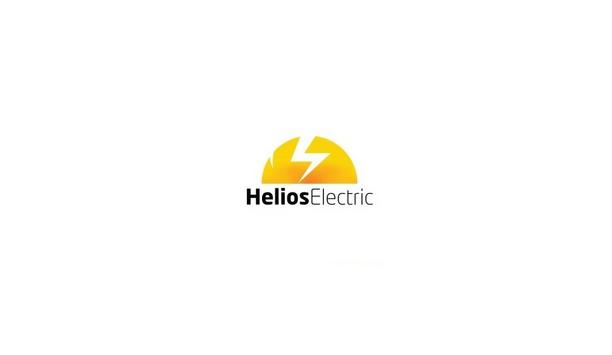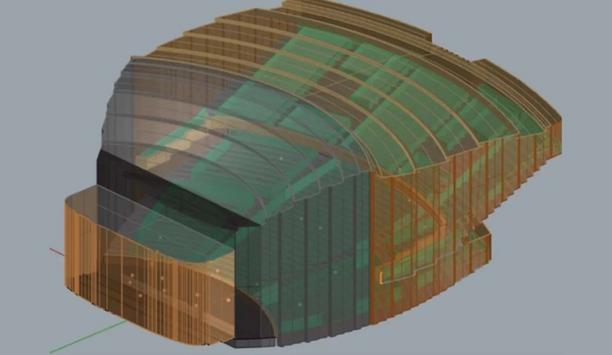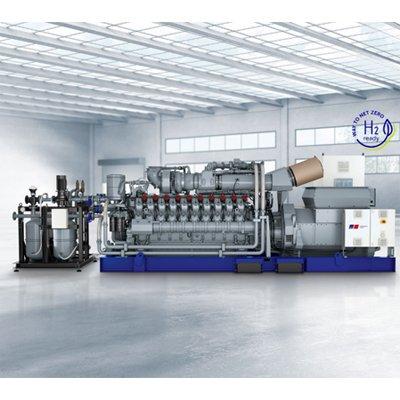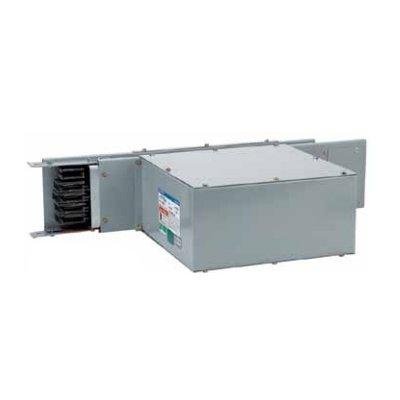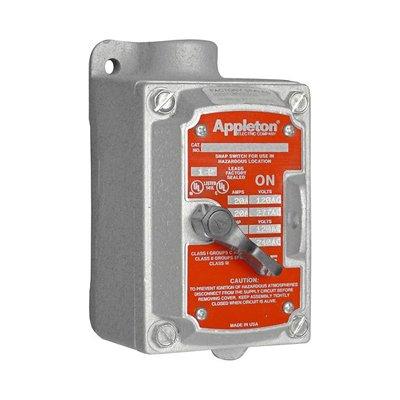IoT
News
Hitachi Astemo, Ltd. (hereafter “Astemo”) and GlobalLogic Inc. (hereafter “GlobalLogic”) have been strengthening their collaboration to lead the trends of software-defined vehicles. Astemo President & CEO, Kohei Takeuchi and GlobalLogic CEO, Nitesh Banga discussed the future of mobility through digital transformation. As a global mega-supplier, Astemo has been providing tangible value in the In-Car domain as internal vehicle technology, such as software that enables advanced vehicle functions, including autonomous driving. Internal vehicle technology In addition, Astemo focuses on the Out-Car domain, which is technology outside of vehicles that expands functionality and improves performance through cloud and communications technology. To further strengthen support for the Out-Car field, Astemo Cypremos, Ltd. (hereafter “Cypremos”) was established on November 1. Astemo Group as a Tier 0.5 supplier will continue to develop technologies and provide value for the mobility of the future. Vehicle OEMs are rapidly transforming to become Tech companies and developing SDV architecture Vehicle OEMs are rapidly transforming to become Tech companies and developing SDV architecture to provide over-the-air updates and generate additional revenue streams through the lifecycle of the vehicles. GlobalLogic is enabling the mobility industry through this transformation by creating technology both in-vehicle and around-the-vehicle platforms that create revenue streams for the OEMs and the broader mobility ecosystem. Electric vehicle propulsion systems The company has formed various partnerships with major Automobile manufacturers, Parts suppliers, Hyperscalers, Semiconductor companies, Fleets, and Automotive retail. GlobalLogic is also focusing on the development of electric vehicle propulsion systems and is contributing to the realization of next-generation sustainable transportation and enhanced vehicle safety, comfort, and connectivity. The two CEOs, who discussed the future of mobility through digital transformation, made the following statements. Software and digital transformation Astemo, Takeuchi CEO: "Astemo has the VISION. We provide more than just safety and peace of mind. By removing barriers like time and space, we aim to empower people worldwide to enjoy greater freedom and quality of life.” “The keys to achieving this vision are software and digital transformation. Therefore, Astemo established Cypremos as a new company that provides software and cloud services aimed at expanding its support for SDV and realizing new mobility services. The new company will provide value by improving car intelligence and mobility evolution linked to the cloud. Astemo continues to accelerate the development of technologies for future mobility, working with various partners with excellent technologies such as GlobalLogic, to realize our VISION.” Engineering digital products GlobalLogic, Nitesh Banga CEO: "At GlobalLogic, our purpose is to create a positive impact for society and the planet by engineering digital products, platforms, and services that are designed for desirability, curated for intelligence, and built for excellence. In close collaboration with our clients across healthcare, energy, finance, mobility, and more, we drive business transformation through intelligent, sustainable solutions.” “We share in Astemo's VISION and together, will build a future where technology elevates daily life and promotes meaningful, sustainable change for the mobility industry and communities worldwide." Astemo will accelerate its efforts together with GlobalLogic and our other various partners to develop the mobility of the future for sustainable growth.
On January 20, 2022, the first converter valve of the China Great Bay Area DC back-to-back project was successfully put into operation for the first time, marking an important step forward for the interconnection of the core areas of the Eastern and Western Pearl River Delta of the Guangdong power grid. The converter valves were supplied by NR. Unit 1 on the East side of Guangzhou took the lead in entering the system commissioning stage among the four units of the whole project, creating a new record of successful operation and "zero" sub-module failure, thanks to various innovations and efforts. Safety and reliability of the sub-module In the design, the iterative upgrading to improve the reliability is made on the primary design and secondary board, which effectively ensures the safety and reliability of the sub-module. In terms of test methods, two non-invasive whole tower test methods have been pioneered. One is the valve tower rapid test technology, which can compress the test time of a single tower by at least 5 times, and maintain the integrity of the secondary circuit and optical fiber circuit of the sub module in the whole process. Communication status data of submodules Two technologies greatly improve the test efficiency and reliability of the converter valve subsystem The second is the communication on-line monitoring technology, which obtains the communication status data of submodules in real time. The two technologies greatly improve the test efficiency and reliability of the converter valve subsystem, and lay a foundation for the success of the one-time operation of the converter valve. Through technological innovation, NR assisted the owner to complete the set objectives with high quality and quantity under the condition of tight deadlines. It took only 45 days from the installation of the converter valve to the commissioning of the system. Scientific and technological innovation The DC back-to-back project of Guangdong power grid will strengthen the power supply guarantee of the China Great Bay Area. At the same time, it also has important functions in fault isolation, emergency power support, power exchange, and so on. NR will continue to practice the corporate purpose of "creating value and serving society" through scientific and technological innovation, and providing customers with high-quality products, solutions & services.
Luxi Island microgrid system, which was designed, supplied, commissioned and delivered by NR, has been successfully put into operation. The system effectively solved the black start problem of 10kV feeder level microgrid with impulsive load, and has won high recognition from users with an advanced and intelligent control strategy, a stable and reliable microgrid system. Power supply of Luxi Island The power supply of Luxi Island was transmitted remotely by submarine cables Luxi Island is located on the east coast of China. The power supply of Luxi Island was transmitted remotely by submarine cables, which was easy to cause power supply interruption due to cable and tower damage. Due to the weak load carrying capacity of the original microgrid system, complex black start steps, difficult operation and low success rate, once the power was cut off, the recovery time was long, which seriously affects the production and life of residents on the island. Microgrid energy management system NR provides microgrid integrated solutions, including a microgrid energy management system, a microgrid coordination controller, an energy storage converter, and other core equipment, which effectively solves the existing problems. A microgrid system was required to quickly restore power supply after a power loss of the large power grid, and the black start function was the most important means to restore power supply and an important guarantee for the stable operation of the system. 10kV distribution network feeders usually have a large number of T-connected transformers, large load capacity. Research of microgrid technology NR successfully realized the black start function under the condition of full input of 10kV The simultaneous start of transformer inrush current and a large number of motor loads was easy lead to black start failure. The automation level of the existing distribution network system was low, relying on the manual opening and closing switch of the operation and maintenance personnel, and the power failure time of the system was long. In view of these problems, based on the long-term accumulation in the research of microgrid technology, NR successfully realized the black start function under the condition of full input of 10kV feeder load through intelligent one-key black start control and flexible synchronous parallel start technology of multiple converters. Technical advantages of NR The whole process took less than 10s from the issuance of command to the stable establishment of bus voltage, and quickly realized power supply restoration of 18 transformers, 1359 resident users and 177 non-resident users. The power supply reliability of Luxi Island has been significantly improved. The successful implementation of the project has further consolidated the technical advantages of NR in the field of microgrid, and provided the solution for the local autonomy of the new distribution system with high distributed energy resource penetration. NR will continue to practice the corporate purpose of "creating value and serving society", and contribute more to the development of a reliable green power system.
Smartkem, which is seeking to change the world of electronics with a new class of transistor technology, announced that now, Friday, March 21, 2025, Chairman and CEO Ian Jenks, CFO Babara Keck, and Head of Communications Selena Kirkwood will ring the opening bell at the Nasdaq MarketSite in Times Square, NYC. Commercialization of microLED Jenks stated, "We are extremely excited and honored to ring the opening bell to increase awareness of our progress to enable the adoption and mass commercialization of microLED displays. We continue to advance our goal of commercializing our proprietary semiconductor materials, which enable flexible, transparent, and lightweight microLED displays." The Nasdaq opening bell ceremony will be broadcast live at 9:15 a.m. Eastern Time from the Nasdaq MarketSite Tower in New York City, New York.
Expert Commentary
Fleet electrification provides opportunities to achieve climate goals while delivering social, financial, and environmental benefits to individuals, businesses, and communities, but the road to successful EV implementation is not without obstacles. Your EV fleets need to work — all the time under varying conditions — to ensure optimal uptime while maintaining energy efficiency. Consequently, electric vehicle service equipment (EVSE) can’t just be “tacked onto” your existing operation. Rather than a “new standalone addition,” it requires a thoughtful and forward-looking approach to seamlessly integrate into your overall facility. Ensuring the type of reliable power needed for an electrified fleet is critical. Luckily, there are a number of new and emerging solutions that promise to deliver clean and reliable local power generation. The Challenges The availability and reliability of the power needed to support electrified fleets is a primary roadblock for many commercial fleet operators. It’s important to look at where that power comes from, how much it will cost, and whether it will be available when needed. Projections indicate that the demand for electricity will surge by 50% during the next two decades Today’s energy landscape is complex. Projections indicate that the demand for electricity will surge by 50% during the next two decades, with no signs of slowing down. According to Grid Strategies, the U.S. electric grid is not prepared for this level of significant load growth. The sheer amount of power needed to keep trucks charged and running 24/7 can be substantial. This poses a key risk for reliability in EV infrastructures, particularly in mission-critical situations. In addition, most fleet operators have become accustomed to fairly predictable fuel costs, since many take advantage of long-term supply arrangements. By contrast, electricity grid costs can vary and result in unpredictable spikes. This adds an extra layer of complexity when it comes to the planning and timing of fleet charging. As a result, many fleet charging operations are turning to local power generation. Intelligent Microgrids, the Energy Insurance Microgrids are nothing new, with rural communities relying on them for decades. Increased affordability and shifting regulations are allowing for more of these microgrids to be powered by renewable energy methods. A common misconception is that microgrids can completely off-set power from the grid. In reality, they are designed to provide peak load shaving and system resiliency. Coupled with an EV infrastructure, microgrids can offer more flexible and reliable energy management. When compared to a traditional microgrid for a building system, microgrids for fleet electrification present new challenges. Most notably, microgrids for fleet electrification are not modeled on an existing load, but rather anticipated demand, which can make reliable load-based modeling more difficult. However, an "intelligent" microgrid uses control systems to manage, store, charge, and discharge energy across the system. Strategic energy management The system can buy power from the grid during low-cost periods while storing self-generated solar power These controls monitor supply and demand, track real-time electricity prices, and create efficient charging schedules, considering factors like Time of Use (TOU) and peak day rates. For example, when electric fleets plug in, demand may increase significantly overnight, making strategic energy management crucial. The system can buy power from the grid during low-cost periods while storing self-generated solar power for later use. When prices rise, it discharges stored energy, keeping costs stable. It can also operate independently, ensuring continuous power during outages and disruptions, improving efficiency, cost control, and reliability. Conversely, fleets often permit charging flexibility within defined boundaries, providing a unique dispatchable resource that can be tuned to fit the needs and energy resources of the customer. A New Category of Local Power Generation Linear generator technology is proving to be an innovative solution for EV infrastructures by providing flexible, resilient and cost-effective on-site base load power. Linear generator technology provides fuel-flexibility meaning they can directly run and switch among traditional fuels like natural gas or propane. Or, they can use low and zero-carbon fuels such as RNG, biogas, hydrogen, and ammonia. Its backup capabilities ensure power through hurricanes, sub-zero snowstorms, excessive heat, and other extreme conditions. Based on capex and operating costs, linear generators can provide a competitive levelized cost of ownership compared to grid power or other alternatives in certain regions. Net-zero goals These solutions allow for flexibility and integration of new fuels as they become available The technology can also be quickly deployed at scale, which is ideal for large fleet operators looking to quickly and cost-effectively deploy resilient EV charging infrastructure while reducing emissions and working toward net-zero goals. What’s more, linear generators deliver a more “future-proof” path. While the dominant sources of fuel for local power generation today is well understood, new and exciting fuels are on the horizon. These solutions allow for flexibility and integration of new fuels as they become available. All without having to replace or retrofit existing equipment. Experts Will Power the Future As companies look to integrate EVs into their operations, a well-thought-out plan for infrastructure is essential to ensure safety, reliability, and long-term success. The integration of onsite power systems will play a critical role in optimizing energy use, lowering costs, and maintaining system resilience. The good news is that energy management is becoming more flexible, ensuring that fleet electrification is not only sustainable but also cost-effective. To ensure a seamless transition and maximize the benefits of fleet electrification, many companies will be moving forward by working with experienced consultants and planners to create a future-proof infrastructure that meets both operational and environmental goals.
The promise of electric vehicles is closer to reality than ever before. New plans and investments at the federal level designate billions of dollars to move our country toward clean energy, including $2 million to help auto manufacturers retool facilities to increase EV production. Additionally, the Biden Administration has announced a goal to create 100% carbon-free electricity by 2035 and a net-zero carbon economy by 2050. Domestic EV marketplace The domestic EV marketplace has grown from 16,000 to more than 2 million vehicles in the last decade and is poised to expand at lightning speed over the next ten years. S&P Global mobility has predicted that by 2030, electric vehicles (EVs) will make up 40% of the U.S. market share of new vehicles on the road. This dramatic increase in EVs will require a nationwide network of charging stations to meet the demand from the current 140,000 to over 1.1 million. Charging stations It is a necessity that regulators lay the groundwork now for a reliable and secure charging networkThe expansion of charging stations will undoubtedly give zero-emissions drivers more confidence in their ability to refuel more conveniently. Still, it’s critical that confidence in infrastructure security also be prioritized alongside this growth. If not adequately protected and monitored, charging stations could serve as access points for cybercriminals, potentially leading to personal data leaks, attacks on vehicle systems, and even widespread blackouts. As EVs continue to gain momentum as realistic alternatives to CO-2 emitting vehicles, it is a necessity that developers and regulators lay the groundwork now for a reliable and secure charging network for the long term. EV Charging Infrastructure and the electric grid The nation’s electric grid generates and delivers electricity essential to everyday life. It’s made up of power plants and other sources of generated electricity, complete with transmission and distribution lines and infrastructure that delivers essential power. Grid connection An important aspect to remember about EV charging stations is that they connect to their relative electric grid. Simply put, the infrastructure for charging stations is comprised of devices that wait for another device to connect and communicate. However, it lacks a third-party firewall or other devices that can act as protection. Unfortunately, this results in vulnerability and means new doors for cybercriminals to walk through. Cybersecurity risks If the grid became compromised by a large-scale attack, it could lead to destructive and widespread blackouts Even before EV charging stations are factored in, the electric grid faces substantial cybersecurity risks from criminals, terrorists, hackers, and foreign governments every day. If the grid became compromised by a large-scale attack, it could lead to destructive and widespread blackouts that would undoubtedly affect EV charging stations and other essential institutions such as banks, hospitals, and gas stations. With the expansion of EV charging stations, the risks only grow. Now is the time to address threats and strategize before disaster strikes. Risks of connectivity emerge The world we live in has reached a level of being almost entirely connected at all times – security systems, appliances, health monitors, industrial sensors, and now, our vehicles. While the connectivity of vehicles has been incredibly beneficial to consumers and the automotive industry alike, the growth in the internet of things (IoT) has opened countless doorways for cybersecurity threats. Software flaws One young information technology security specialist reported finding flaws within a third-party software that a handful of leading EV manufacturers use. It gave him access to more than 25 EVs in at least 13 countries. The man, who stumbled on the findings in 2022, said he could remotely control some EV functions, including starting vehicles, unlocking windows and doors, disabling security systems, and turning on stereo systems and flashing headlights. The IT specialist said he could also tell if a person was in the vehicle. In a separate and concerning situation, a single compromised password led to a foreign-fronted cyberattack on a U.S.-based pipeline in 2021. It halted the fuel supply process on the east coast and cost the company $4.4 million in ransom money. Cyberattacks Thousands of charging stations are already in danger of being targeted by cybercriminals The point is that even massive and powerful companies can fall victim to cyberattacks. Even though cybersecurity is a critical issue for EV manufacturers, their systems are still vulnerable to hackers. Thousands of charging stations are already in danger of being targeted by cybercriminals, and as the number of stations grows, so too will the risk. The higher the number of entry points, the more opportunities hackers will see. If they can break into and gain access to even the most sophisticated EVs, it could be catastrophic. Ensuring security and reliability through proactivity Because charging stations are connected to the country’s primary grid, the entire infrastructure must be armed with the most aggressive security measures. The risks associated with modernized electric vehicles are not something that traditional automotive safety regulations and security standards properly cover. The complicated and rapid evolution of EVs is putting them at a heightened threat. When charging stations are connected to the electrical grid, it is imperative to ensure strong cybersecurity measures are in place to remain dependable and effective. Embedding cybersecurity technology We often see outside parties utilized to secure tech because of the frequent lack of necessary cyber protection The best way to ensure the electric grid's safety is to build cybersecurity technology directly into the charging stations. We often see outside parties utilized to secure tech because of the frequent lack of necessary cyber protection. Unfortunately, the promising growth EVs and their charging stations bring to our environment also contributes to technology’s vulnerabilities, which can cause key security measures to be overlooked. There’s no getting around it: EV charging stations are highly vulnerable to hackers. Awareness and solutions As the growth continues, there is an acute need for heightened awareness and solutions for the weaknesses associated with these charging stations. These solutions should consider everything from the charging points and devices to operators of the energy distribution networks and infrastructure providers. We must aim to implement advanced cybersecurity measures that will keep safe drivers and all the data that EVs contain.
Power Beat
Electricians play a pivotal role in preventing electrical fires by following safe practices during installations, repairs, and inspections. At a minimum, electricians should ensure all electrical wiring and components are installed according to current building codes and manufacturers' specifications. This includes using the right size wires for the amperage load, using approved materials, and properly securing all connections. During electrical inspections, electricians should identify and address any potential fire hazards. Electricians can also advise homeowners on electrical safety measures they can take to prevent fires. These include safe appliance use, avoiding overloaded outlets, and the importance of smoke detectors and fire extinguishers. Maintenance of electrical systems Ground Fault Circuit Interrupters (GFCIs) can prevent possible fires. GFCI outlets have built-in protection to detect imbalances in electrical current and quickly shut off power to prevent shocks and potential fires, particularly in areas prone to moisture like kitchens and bathrooms. Regular maintenance of electrical systems is also crucial for fire prevention. Electricians can perform preventative maintenance checks to identify and address any developing issues before they become serious fire hazards. Fire departments responded to an average of 32,160 home fires involving electrical distribution Fire departments responded to an average of 32,160 home fires involving electrical distribution and lighting equipment each year in 2015–2019, according to the National Fire Protection Association (NFPA). Electrical fires cause scores of civilian deaths and hundreds of civilian injuries, as well as millions of dollars in property damage. Fire Hazards in the Home Some of the electrical components that present fire hazards in the home include faulty electrical outlets and switches, worn or damaged components, overloaded circuits, damaged or frayed cords, and misused extension cords and power strips. Improper use of light fixtures can also be a danger, and space heaters can be a fire hazard if they are placed too close to flammable materials or left unattended. Damaged or frayed cords can cause sparks and ignite nearby flammable materials As outlets and switches age, the wiring behind them can loosen and break, causing sparks and fire. Loose plugs can also overheat and ignite surrounding materials. Plugging too many appliances into a single outlet or using extension cords instead of proper wiring can overload a circuit, thus causing overheating and fires. Damaged or frayed cords can cause sparks and ignite nearby flammable materials. Cords that are kinked, pinched, or have exposed wires should be avoided and replaced immediately. Minimizing the Risk of Electrical Fires Here are some steps a homeowner can take to minimize the risk of fire from electrical systems: Upgrade the electrical system, especially if the home is older. If the electrical system has not been updated in a while, a qualified electrician can advise if it needs modernization. This could involve upgrading to breakers with better safety features such as Arc-Fault Circuit Interrupter (AFCI) and Ground Fault Circuit Interrupter (GFCI) technology. Schedule an electrical safety inspection. Having a qualified electrician periodically inspect a home's electrical system can identify potential problems before they escalate into fire hazards. Keep flammable materials away from electrical components, including curtains, furniture, and piles of paper. Sparks and overheating can easily ignite nearby flammables. Addressing Multiple Threats Effective communication is key for electricians to impress upon homeowners the seriousness of fire hazards. Avoid technical jargon and explain fire hazards in clear, concise language that homeowners can understand. Focus on the potential consequences, like damage to property or injury, to heighten awareness. Pictures can be worth a thousand words. Show homeowners examples of damaged wiring, overloaded outlets, or faulty installations that pose fire risks. This can be done through photos on a tablet or phone, or even carrying around small physical samples. Frame the conversation around safety for the homeowner and their family. Highlight how addressing these hazards can prevent potential fires and ensure a safe living environment. Provide a written report after the inspection or repair. This report should detail the identified hazards, the corrective actions taken, and any recommendations for future maintenance or upgrades. By combining clear communication, visual aids, and a focus on safety, electricians can effectively convey the importance of addressing fire hazards to homeowners and empower them to make informed decisions about their electrical systems.
Rising material prices and inflation, in general, are likely to continue to plague electricians and others in the trade service businesses, according to a new survey conducted by the business management software platform Simpro. In the survey, 20% of electrical respondents say they are more likely to face rising material prices this year, while 20% of owners, CEOs, and business managers in the broader category of trade service businesses are more likely to face inflation concerns. ongoing economic uncertainty Another big concern across all trade service businesses is staff retention. Even higher percentages of survey respondents expect continuing challenges presented by the labor market: 73% anticipate hiring to be more challenging in 2023 than last year because of a lack of skilled workers (cited by 51% of respondents) and ongoing economic uncertainty (cited by 50%). The survey, conducted in January 2023, also highlighted changes trade service companies saw in the market last year compared to 2021. Customer acquisition Customer acquisition was more challenging in 2022, according to 66% of survey respondents In a service-based industry, customer satisfaction is a high priority: 95% of trade professionals noted that customer experience is paramount, and 73% have adopted technology tools specifically designed to enhance the customer experience. Customer acquisition was more challenging in 2022, according to 66% of survey respondents, while customer retention was more challenging for 60% of respondents. Hiring was also more difficult than in 2021, according to 76% of the survey respondents. Simpro’s smart technology solutions In the survey, Simpro seeks to highlight the ways technological innovations can shape the future of trade services businesses and their customers. Simpro’s total business management software platform for commercial trade service businesses performs functions such as job quoting, scheduling, inventory tracking, invoicing, and others. Simpro’s smart technology solutions and expert long-term support help businesses build, repair and power their future with control over operations. “Voice of the Trades” survey Trade professionals are estimated to spend more than 18 hours a week on tasks such as scheduling In the “Voice of the Trades” survey, 72% of trade professionals (including HVAC, security, plumbers, contractors, electricians, and others) believe that new software and technology must be adopted to remain competitive. Also, 60% feel that administrative burdens have a negative impact on their ability to service customers. Trade professionals, including electricians, estimate they spend more than 18 hours a week on tasks such as scheduling, inventory, invoicing and overall workflow management. The report reveals why it is so hard to find a contractor or service technician right now: 49% of respondents share a belief that time on admin has directly contributed to that customer frustration. Clear roadmap for operational efficiency “The Voice of the Trades findings confirm the need for trade businesses worldwide to implement technology solutions to lessen the burden of business management in any economy,” said Gary Specter, CEO of Simpro. “This research provides a clear roadmap for improving operational efficiency so trade organizations can better serve their customers.” The report gleaned feedback from 840 respondents who are trade industry professionals, with a geographic pool that includes the U.S., U.K., Australia, New Zealand, and Canada. Founded in 2002 by an electrical contractor and headquartered in Brisbane, Australia, Simpro supports more than 8,000 businesses and 200,000 users worldwide in the electrical, plumbing, HVAC, security and fire protection industries with 700-plus employees in six offices around the world.
Packaging materials help to protect fragile electronics and electrical components from breakage. Small electrical devices and electronics are often packaged in individual plastic coverings within a larger box. Manufacturers use a variety of plastics to produce anti-static bags, pouches, film, and bubble wrap for electronics. single-use plastics Excessive consumption of single-use plastics and other packaging materials is an emerging concern in the electrical market. The use of plastic and non-recyclable materials in equipment packaging is contributing to the electrical market’s environmental footprint. organic packaging More electrical manufacturers need to transition towards a more sustainable future and implement organic packaging. Companies can minimize the negative environmental impact and become more green-friendly. While the industry has previously had a negative environmental impact, many businesses are rectifying these issues. Using less paper, plastic, wood, metal packaging, and other auxiliary materials contributes to the goal of being lightweight, recyclable, and sustainable. polystyrene foam Of the total plastic packaging waste, around 40% is disposed of at sanitary landfills Many electrical components are packaged with plastic shrink films. In addition, polystyrene foam can be used to cushion components, and plastic corner protectors may be used to strengthen boxes. Less than 10% of the plastic waste ever generated has been recycled. Plastics pollute the ocean and do not decompose in landfills. Of the total plastic packaging waste, around 40% is disposed of at sanitary landfills, 14% is collected for recycling, and 14% makes its way to incineration facilities (which cause CO2 emissions). The negative impact of plastic The fact is, most plastics used for packaging are recyclable, although most wind up in landfills due to ineffective or non-existent packaging recovery schemes. In addition, plastics contribute to emissions of greenhouse gas at each stage of their lifecycles. Therefore, plastics, which contribute up to 13% of the total “carbon budget,” will negatively impact efforts to meet the Paris climate agreement. action against single-use plastics There is a shift in focus from consumer education to holding manufacturers responsible for their environmental impact Focusing on consumer behavior has spurred much of the campaign against plastics to date. For example, the federal government has taken steps to phase out single-use plastics in national parks and other public lands. Several states have taken action against single-use plastics. For example, New Jersey no longer allows grocery stores and retailers to distribute plastic bags. The Garden State has also banned polystyrene foam packaging from restaurants and food companies. However, there is also a shift in focus from consumer education to holding manufacturers responsible for their environmental impact. Maine and California are focusing on the issue and may be among the jurisdictions to target manufacturers’ role in single-use plastics. replacement alternatives There are replacement alternatives available, but they tend to add costs for manufacturers. For example, bioplastics are made with biodegradable sources that can break down faster than traditional plastics. However, bioplastics must be properly disposed of through composting to break down. Also, bioplastics are not recyclable and can even contaminate other recyclable materials. Disposal in a landfill, which is common, defeats the purpose of using more expensive materials. environmentally friendly alternatives Some argue that recycled plastic may be the greenest alternative, although it results in recyclables winding up in landfills Instead of polystyrene foam, packaging may consist of corrugated cardboard or plastic alternatives that are allegedly more environmentally friendly. Biodegradable wood or paper are other alternatives. However, disposal in landfills continues to be problematic with decomposition sometimes leading to the production of methane (a greenhouse gas). However, some argue that recycled plastic may be the greenest alternative, although recycling realities instead result in recyclables winding up in landfills, where they do not decompose. EPR schemes An added cost for electrical manufacturers might be a requirement to pay into extended producer responsibility (EPR) schemes. EPR is a strategy to add the estimated environmental costs associated with a product’s entire lifecycle to the cost of the product. In effect, the strategy assigns responsibility for the environmental impact of products to the manufacturer. Legislation Legislation to address packaging EPR has been implemented in Maryland, New York, Washington, and New Jersey (originally introduced in 2022 and still active). In 2016, the Product Stewardship Institute developed a model packaging EPR legislation, then updated it in 2019 with input from the industry and government. Maine and Oregon used the model to enact packaging EPR laws in 2021, Colorado followed suit in 2022 and, that same year, California also enacted legislation that the model informed.
Case studies
As part of a long-term modernization project at the Baltimore Washington International (BWI) Airport, Helios Electric was retained to perform design-assist, system integration, and on-site field engineering services. The project involved replacing an existing 7.5/10.5 MVA outdoor substation transformer and performing retrofit services at the corresponding medium-voltage switchgear lineups. The project also included enhancements to the electrical system protection since power reliability was deemed vital for airport operations. SEL-787 transformer protection relay A new SEL-787 transformer protection relay was installed to perform advanced transformer monitoring, controls, and system protection. New pilot control devices were installed on the corresponding switchgear lineups to indicate transformer faults, alarms, and mechanical conditions. Vacuum circuit breakers at the existing switchgear lineups were retained and modified to establish connectivity with the new substation transformer and the new transformer protection relay. transformer protection functions This installation approach yielded improved protection for the new transformer while limiting the scope, budget, duration, and power outages required to accomplish the necessary tasks. The improved transformer protection functions included the following: ANSI-87 – Current Differential Protection ANSI-87G – Restricted Earth Fault Protection ANSI-50/51 – Phase Overcurrent Protection (Backup) ANSI-50/51G – Ground Overcurrent Protection (Backup) ANSI-63 – Transformer Sudden Pressure ANSI-71 – Transformer Low Oil Level ANSI-49 – Transformer High Winding Temperature ANSI-26 – Transformer High Oil Temperature AC/DC control modifications To fulfill the customer’s desired requirements, the Helios Electric team investigated the internal circuitry of the switchgear lineups and ascertained the specific AC/DC control modifications required at the existing. Work performed under this project included the following: Examining and analyzing the components and sub-components of the existing switchgear lineups. Tracing the existing 35kV-class and 15kV-class vacuum circuit breakers to determine the existing field configuration. Developing modified equipment shop drawings for approval, construction, and as-built conditions. Programming and configuration of SEL-787 Transformer Protection Relay to establish system protection, controls, and integration with the facility’s Supervisory Control and Data Acquisition (SCADA) System. Installing and modifying existing 35kV-class and 15kV-class vacuum circuit breaker controls to accommodate the new substation transformer and transformer protection relay. Developing Operation & Maintenance (O&M) manuals for modified electrical equipment lineups. On-site electrical equipment training for airport maintenance personnel.
SoFi Stadium, a world-class venue, turned to industry major - Belden for a complete end-to-end cabling and connectivity solution. Belden’s cutting-edge technology supports the stadium’s data-heavy demands, including the one-of-a-kind, roof-suspended Oculus video board, Wi-Fi infrastructure, digital ticketing, and a DAS system. Belden’s solutions for SoFi Stadium When the stadium’s owners required a solution that delivered top-tier quality, performance, and reliability while reducing labor costs, they called Belden. Count on Arrow to deliver unparalleled excellence in the low-voltage industry. Arrow will equip with the competitive advantage needed for any customer, any configuration, and any budget. Copper Cables & Copper Solutions Discover the ultimate lineup of Belden Inc. category cables, tailored to suit every application imaginable! Discover the ultimate lineup of Belden Inc. category cables, tailored to suit every application imaginable! Many cables featured their signature patented Bonded-Pair design, guaranteeing unparalleled signal integrity. Plus, with DataTuff® Industrial category cables, rest assured the system remains resilient against the toughest environmental conditions. Category 6A Choose from an assortment of configurations including small diameter, snake, industrial, non-bonded, and their innovative patented Bonded-Pair technology. Elevating performance benchmarks, Belden's renowned 10GXS Cable stands as the gold standard in the industry. Category 6 Belden has a wide array of Category 6 performance options, featuring their top-of-the-line REVConnect 3600 System cable boasting premium performance and ample headroom. The REVConnect 2400 System cable, surpasses TIA-568-C.2 standards, all backed by Belden’s renowned quality. Category 5e Belden presents a range of Category 5e performance options, with their flagship 1200 Series cable delivering exceptional headroom, surpassing the TIA-568-C.2 Category 5e standard. Featuring Bonded-Pair technology, their 1200 Series ensures unparalleled robustness in installations. Patch Panel Belden’s commercial-grade panels are available in modular (empty) configurations Belden offers a comprehensive range of copper patch panels tailored to meet the demands of both commercial and industrial settings. Belden’s commercial-grade panels are available in modular (empty) configurations or pre-loaded with high-quality copper jacks designed for Category 6A, 6, and 5E network installations. Trunk Cable Optimized for data centers, enterprise networks, and any environment prioritizing swift installation, Trunk Cable Assemblies offer factory termination and rigorous testing, slashing installation time by up to 90%. Eliminating the need for termination, these assemblies come in diverse lengths, equipped with connectors tailored to specific application requirements. Patch Cord Enhancing both performance and physical durability, Belden’s Copper Patch Cords ensure optimal transmission quality for network channels. With superb return loss characteristics adaptable to any environment, Belden’s Copper Patch Cords come in modular, small-diameter, and traceable solutions to meet specific needs. Fiber Cable & Fiber Solutions Discover an array of high-quality indoor and outdoor cable solutions within Belden’s comprehensive product line, featuring both tight buffer and loose tube designs. Tailored for diverse industrial settings, their offerings include armored, burial, and ruggedized options. Crafted to meet various specifications, their product range encompasses OM1, OM3, OM4, OM5, and OS2 (Single Mode) configurations. Tight Buffer Fiber Cables Tight-Buffered Fiber Cables are perfectly tailored for enterprise environments Tight-Buffered Fiber Cables are perfectly tailored for enterprise environments, these cables stand out as a crowd favorite, ideal for intra-building backbones and both horizontal and vertical installations. Offering versatility like no other, they come in fiber counts ranging from two to an impressive 144, making them adaptable to any project scale. Whether indoors or outdoors, these cables are engineered to exceed expectations, boasting a design that ensures seamless performance in any environment. Loose Tube Cables Belden’s Loose Tube Cables offer the ultimate solution for all outdoor and indoor/outdoor fiber optic needs. Whether it’s for OSP, conduit, direct burial, aerial, or trunking applications, Belden’s cables offer unmatched versatility and performance. Choose from a variety of options including dry or gel-filled single and double-jacket designs, with plenum and riser ratings. Armored Cables Belden’s armored cables are designed to withstand harsh environmental conditions, including extreme temperatures, moisture, and physical damage. The armor layer provides an extra level of protection against mechanical stresses, such as crushing, impact, and abrasion, ensuring the longevity and reliability of the cable. It also helps to maintain cable integrity in areas prone to disturbances such as rodent activity. Connectors Belden’s connectors seamlessly integrate fusion splicing with field-installable connectors Belden’s connectors seamlessly integrate the advantages of fusion splicing with the ease of field-installable connectors, they greatly enhance flexibility for field termination, while elevating installation performance and reliability beyond traditional mechanical splice connectors. Eliminating the need for crimping, polishing, or adhesives during termination significantly reduces installation errors. Cassettes Belden offers an advanced DCX and LAN Cassettes platform designed to cater to a wide spectrum of density requirements, ranging from low to ultra-high density applications. Cassettes platform encompasses frames, cassettes, and covers for a comprehensive array of connector types, including LC, SC, ST, and MPO connectors, as well as Copper RJ45 Jacks and Couplers. Patch Cords Simplified, durable, adaptable, and readily accessible. Unmatched quality and performance define Belden's FX patch cords, engineered with a robust design to endure daily wear and tear. Available in standard configurations off the shelf or swiftly customized for tailored installations, they ensure reliability in any setting.
Siemens has developed a digital twin especially for large event spaces. The technology makes it possible to realistically reproduce and simulate very precisely a building’s acoustics and structure. The Sound of Science application will be used for the first time in the Großes Festspielhaus – the Large Festival Hall – at the Salzburg Festival. Sound of Science application Orchestral formations on the stage can also be tested and arranged in advance Sound of Science will enable event organizers to virtually explore how acoustics change in different spatial configurations – for example, how adding acoustic panels affects the listening experience – in order to select the optimal acoustic scenario. Orchestral formations on the stage can also be tested and arranged in advance – before a single note is heard in the real world. This approach saves money, resources and time. Siemens to use digital twins “With Sound of Science, we’re designing the future. Digital twins are not only transforming the everyday for many companies, but are also creating new opportunities for the cultural and creative industries,” said Prof. Dr. Stephan Frucht, Artistic Director of the Siemens Arts Program. Dr. Stephan Frucht adds, “In the future, we’ll be able to plan stage productions better and even simulate them acoustically in advance. We’re delighted to have the Salzburg Festival at our side as a long-standing partner, who recognizes the opportunities such innovations offer.” Sound of Science app for select partners Siemens will make the Sound of Science app available to selected partners from the cultural world free of charge as a demonstration application. There are currently no plans to market the application. Its simulation solutions, however, may be purchased. The Salzburg Festival’s Großes Festspielhaus is the first and only large event space to date in which Sound of Science is available. However, Siemens is planning to digitally simulate further spaces – including concert halls in Germany and England. At the Salzburg Festival, audiences will have an opportunity – unique for the time being – to use VR glasses to experience the application at the festival’s opening on July 20. Siemens and the Salzburg Festival “Siemens and the Salzburg Festival share a common passion for excellence and innovation. And we’re delighted to partake in this pioneering technological development and innovation as part of our long-standing close and trust-based partnership,” said Dr. Kristina Hammer, President of the Salzburg Festival. Dr. Kristina Hammer adds, “We’re excited to see what diverse applications will stem from Sound of Science in the future.” Siemens Simcenter’s simulation solutions The technologies used are part of the simulation solutions from Siemens Simcenter The technologies used are part of the simulation solutions from Siemens Simcenter, which has been part of the company’s core business for over 15 years. The technology is mostly used in industry – for example, for the acoustic optimization of vehicle interiors or for protection against street noise. For Sound of Science, Simcenter uses a combination of impulse response measurements and ray tracing for the 3D modeling of each event space. These methods can measure the echo and reverberation of a sound and simulate how sound waves propagate in a room. Depending on the material, reflections of sound waves behave differently. Those that bounce off a concrete wall react differently from those that hit a carpet or reach the ear directly. As a result, the simulation can reproduce the individual sound signature of each event space – in other words, its acoustic DNA. Siemens Festival Nights Siemens has been working closely with the Salzburg Festival for around 30 years. Since 1999, the company has also been the festival’s main sponsor. Since 2002, the Siemens Festival Nights have been held on Kapitelplatz square during the Salzburg Festival. Since its beginning, this open-air event has provided more than one million visitors with the opportunity to experience previous and current festival productions on an LED screen free of charge. In addition, some of the Salzburg Festival’s venues are equipped with Siemens technology from the areas of building automation, security and acoustics.
Zermatt is a truly unique destination nestled in the Swiss Alps. The town is primarily renowned for its iconic Matterhorn Mountain, which stands at 4,478 meters and is one of the highest and most recognizable peaks in the Alps. Zermatt’s landscape includes 38 peaks over 4,000 meters. With around 2.5 million overnight stays recorded in 2023, Zermatt is one of the most popular tourist destinations in Switzerland. However, due to the town’s remote location and rugged terrain, Zermatt faces specific challenges. These include the need for reliable and sustainable infrastructure and the management of natural risks, such as avalanches and extreme weather events, which can disrupt infrastructure and pose safety concerns. These factors, combined with the altitude difference, oxygen-deficient air, and steep terrain, underscore the need for innovative solutions. For decades, together with its innovative customers, Siemens has been developing technological solutions to meet these challenges. Evaluation of energy flows The hut operates mainly autonomously and is largely self-sufficient in its energy needs The Monte Rosa Hut, located 2,883 meters above sea level, is one of the most iconic mountain huts in Switzerland. The high-tech hut has been equipped with Siemens building technology since its reopening in 2010. In 2021, 8.6 tons of lead batteries were replaced by 2.7 tons of lithium batteries. Continuous online evaluation of energy flows indicated the need for a new solution as the existing lead batteries would soon reach the end of their lifespan. The hut operates mainly autonomously and is largely self-sufficient in its energy needs. With the building management system Desigo CC, as the comprehensive on-site solution to manage all the systems, such as HVAC, Shading, Lighting, Power, Fire Safety, and Security, the operator can quickly review the key equipment values, check key room KPIs, and troubleshoot any potential problems. Troubleshooting potential problems In 2024, the open and flexible IoT platform “Building X” from Siemens was deployed. Building X is the scalable digital building platform to digitalize, manage, and optimize building operations, allowing for an enhanced user experience, increased performance, and improved sustainability. The Matterhorn summer paradise offers bike trails, adventurous kickbike and dirt scooter descents Zermatt Bergbahnen AG is Switzerland’s largest cable car company. The cable car station ‘Matterhorn glacier paradise’ is Europe’s highest cable car station at 3,883 m above sea level. It offers year-round snow experiences and stunning views of 38 peaks over 4,000 m. The Matterhorn summer paradise offers bike trails, adventurous kickbike and dirt scooter descents, and 400 km hiking trails. In the winter, the company offers, together with Cervinia/Valtournenche, 54 lifts and a total of 360 km of slopes. Rapidly changing weather Infrastructure in mountainous and challenging terrain demands high standards due to factors such as altitude, low oxygen levels, and rapidly changing weather. Siemens and Zermatt Bergbahnen share a long-standing and successful partnership in areas such as low-voltage power supply and state-of-the-art control solutions, which has been expanded with the completion of the Matterhorn Alpine Crossing and the connection from Matterhorn Glacier Paradise to Testa Grigia in Italy. Siemens solutions provide complete transparency and traceability of the system, thereby ensuring a seamless energy management overview of the entire infrastructure. This system ensures that all the energy values can be managed directly on the control units and displayed graphically on a state-of-the-art display/HMI or SCADA. Data from different subsystems provided by a wide range of manufacturers can be easily integrated into the overall Siemens system via standardized interfaces. Remote management of critical systems The Gornergrat Railway (GGB) and Matterhorn Gotthard Railway (MGB) are part of the BVZ Group The Gornergrat Railway (GGB) and Matterhorn Gotthard Railway (MGB) are part of the BVZ Group, which includes 10 subsidiaries. The BVZ Group provides public transport and tourism services in the cantons of Valais, Uri, and Grisons. The GGB adopted the first cloud-based operational model in 2017, which was facilitated by Siemens Mobility. It ensures seamless and reliable operation. This innovative approach eliminates the need for on-site server infrastructure and allows for the remote management of critical systems. The integrated control and information system, known as “Iltis”, enhances operational efficiency and safety. This system enables remote control of signaling, monitoring of operations, and management of passenger information systems. Streamlining depot operations Another world premiere in 2023: The first mobile depot control system in the cloud, the Controlguide® TrackOps Depot, for the Matterhorn Gotthard Bahn. Controlguide® TrackOps Depot is an innovative depot control solution, enabling the local management of shunting activities and streamlining depot operations. Utilizing cloud-based technologies, Siemens provided flexible and scalable depot control solutions to ensure the efficient management of railway operations. Tablet-based control interfaces were introduced for depot operations, thereby enabling the simplified and efficient management of shunting activities directly from the field.
Products


